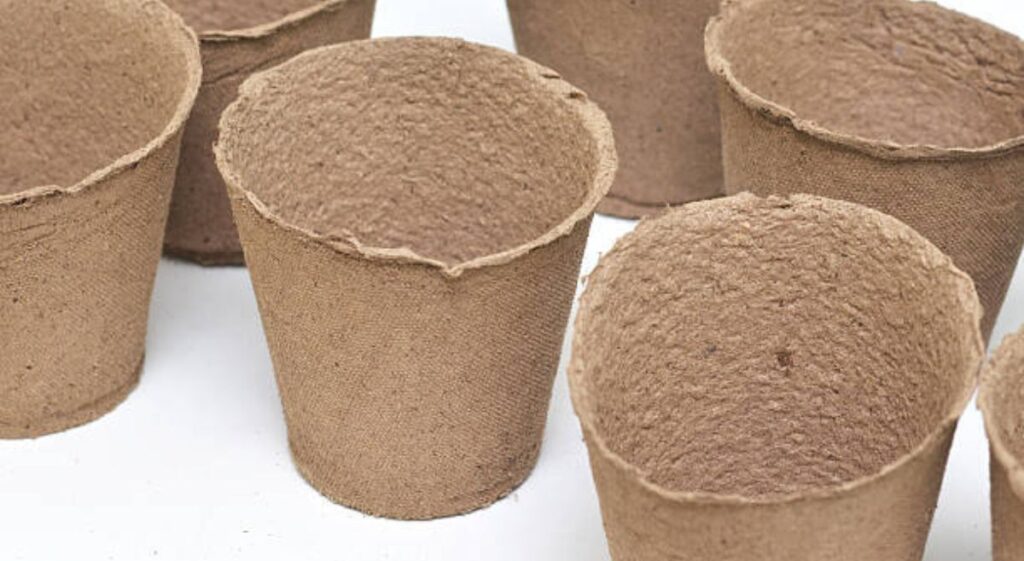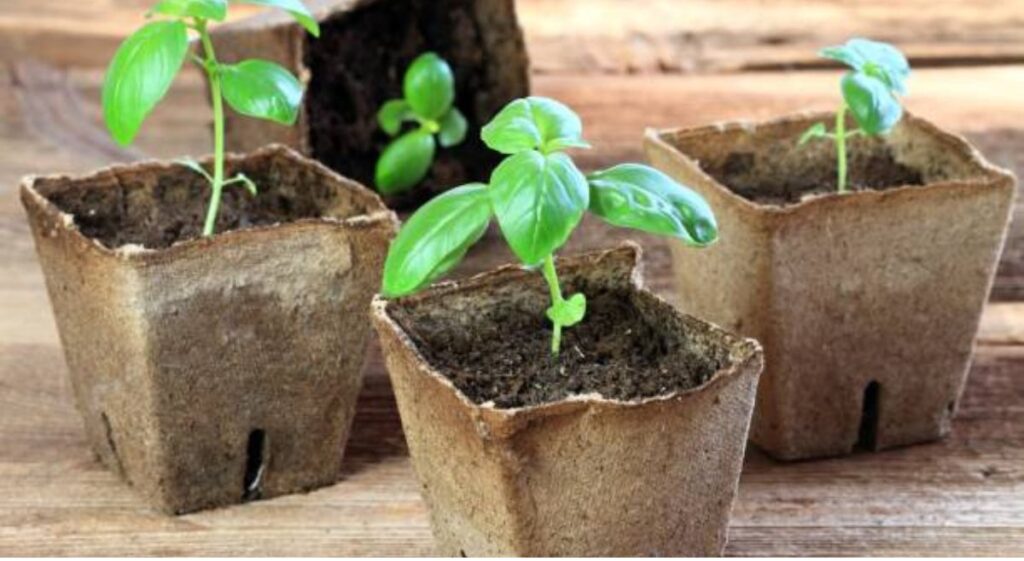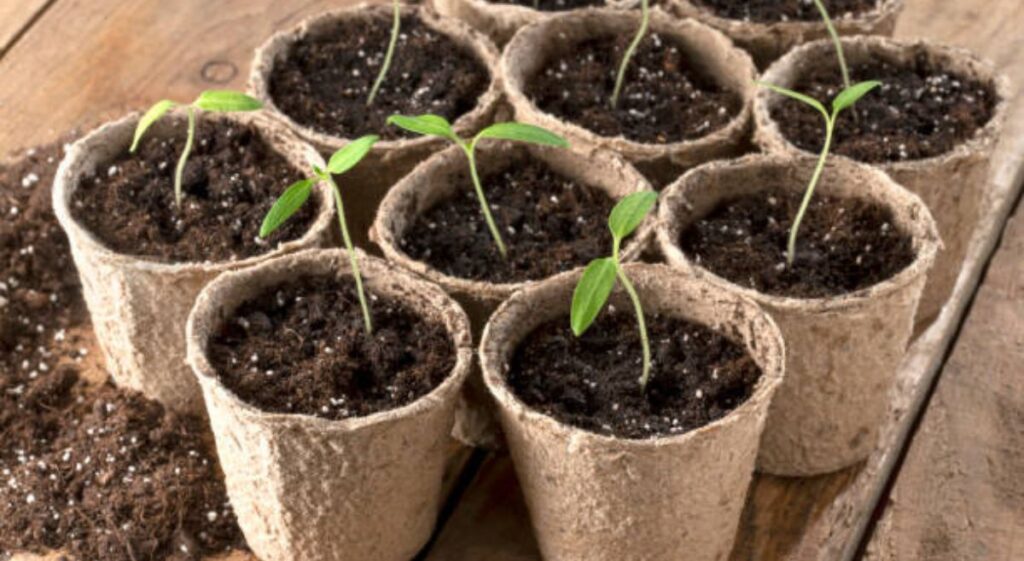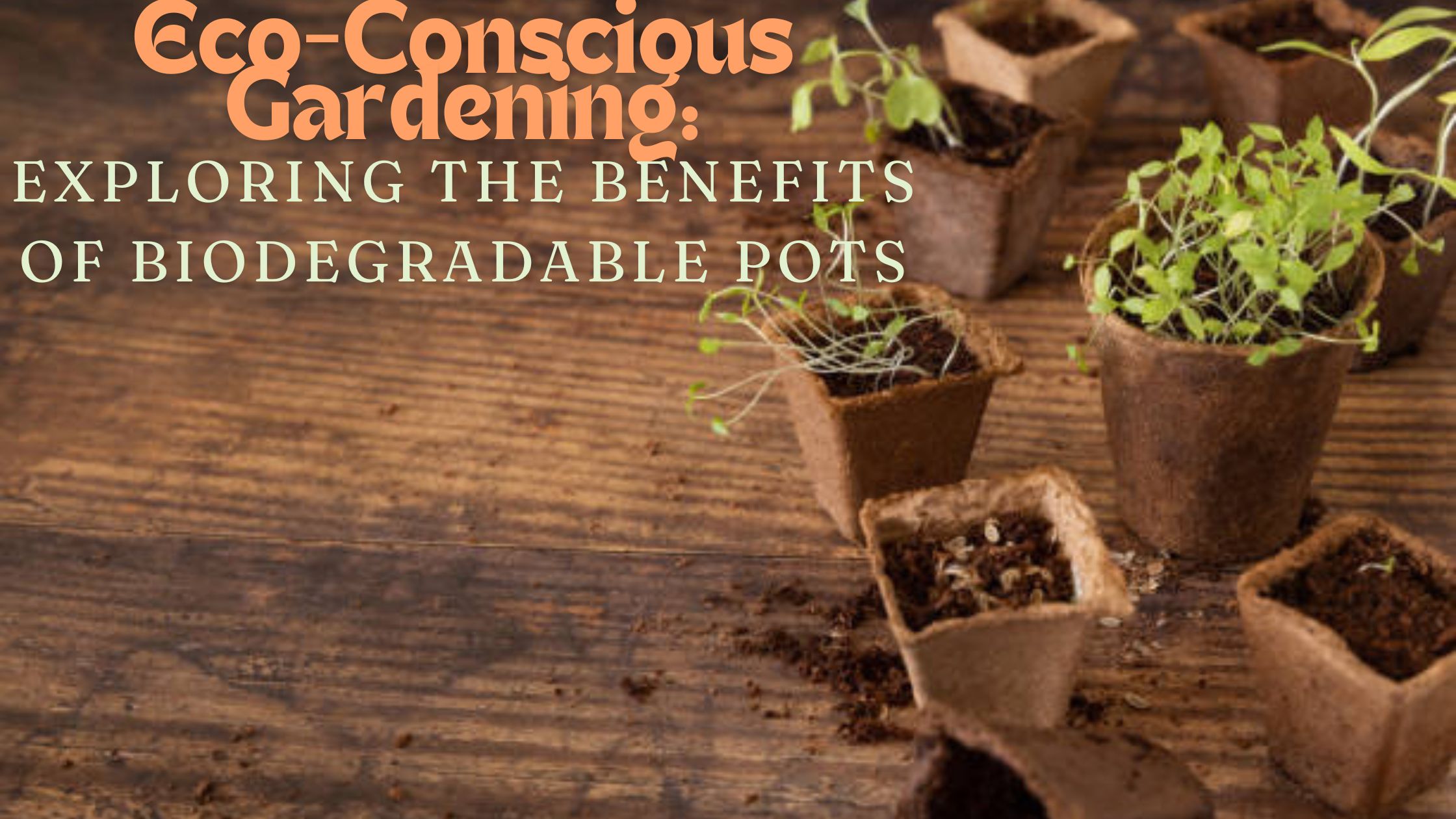Introduction:-
Eco-Conscious Gardening: Exploring the Benefits of Biodegradable Pots

In the realm of gardening, the pursuit of sustainable practices has led to the rise of biodegradable pots. These environmentally friendly alternatives to conventional plastic pots offer a plethora of advantages, not only enhancing the well-being of plants but also contributing to a more sustainable planet. In this article, we will delve into the key benefits of utilizing biodegradable pots in your garden and explore how they contribute to a greener and more responsible approach to gardening.
What are the benefits of biodegradable pots in gardening?
Advantages of Biodegradable Pots:
- Reducing Plastic Waste:
- By opting for biodegradable pots made from natural materials like peat, coir, wood pulp, and rice hulls, you can significantly reduce the plastic waste generated from gardening activities. These pots decompose over time, leaving no harmful residues behind.
- Enhancing Plant Health:
- Unlike plastic pots that restrict root growth, biodegradable pots allow roots to grow through their walls, promoting healthier root development and reducing the risk of root-bound plants.
- Additionally, they retain moisture better than plastic, creating a more consistent soil environment for plants.
- Convenience and Ease of Use:
- Biodegradable pots eliminate the need to remove seedlings from the pot before transplanting them into the garden.
- Simply plant the entire pot directly into the soil, making the process fast and easy, especially for beginners.
- Supporting a Sustainable Garden Ecosystem:
- As biodegradable pots break down, they add organic matter and nutrients to the soil, improving soil structure and fertility.
- Using pots made from renewable resources supports sustainable agriculture and reduces your carbon footprint.
- Promoting Eco-Friendly Gardening Practices:
- Choosing biodegradable pots contributes to eco-conscious gardening by reducing greenhouse gases, minimizing pollution, and promoting a circular economy.
- It can inspire others to adopt greener gardening practices, creating a positive environmental impact.
- Cost-Effectiveness and Versatility:
- Biodegradable pots come in various shapes, sizes, and materials, making them adaptable to different gardening needs.
- While some may have a slightly higher initial cost than plastic pots, their long-term benefits often outweigh the expense.
- Many biodegradable pots can also be made at home using recycled materials, further reducing costs and waste.
What materials are used to make biodegradable pots?
Biodegradable pots crafted from natural and renewable materials offer a sustainable alternative to traditional containers. These pots decompose over time, minimizing harm to the environment. Here are the primary materials used in making biodegradable pots:
- Peat: Derived from partially decomposed plant matter, peat retains moisture effectively and creates an ideal environment for root development.
- Coir (Coconut Fiber): Durable and sustainable, coir is made from coconut husks. It retains moisture well, making it an excellent alternative to peat.
- Wood Pulp: Sturdy pots made from processed wood fibers, wood pulp pots naturally decompose in the soil, enriching it with organic matter.
- Rice Hulls: Lightweight and biodegradable, rice hull pots decompose quickly, adding organic matter to the soil.
- Cow Manure: Nutrient-rich pots made from dried and processed cow manure help fertilize the soil as they decompose.
- Bamboo: Bamboo fiber pots are strong, lightweight, and decompose naturally, making them an eco-friendly choice.
- Paper or Cardboard: Recycled paper or cardboard pots break down easily in the soil and offer a cost-effective option.
- Starch-Based Plastics: These biodegradable plastics, derived from corn or potato starch, are designed to break down in composting conditions, providing a plant-friendly alternative to traditional plastic pots.
These eco-conscious materials allow gardeners to reduce their environmental impact and contribute to a healthier ecosystem.
Can biodegradable pots be used for all types of plants?
Biodegradable pots have versatile applications for various plant types, but their suitability hinges on factors like plant type, pot material, and growing conditions. Here’s an overview of how biodegradable pots perform with different plant categories:

Seedlings and Young Plants:
- Ideal Use:
- Biodegradable pots excel in starting seeds and nurturing young plants.
- They promote healthy root development and easy transplanting as the entire pot can be planted directly into the soil.
- Examples:
- Commonly used for herbs, vegetables, and flowers.
Perennials and Shrubs:
- Caution Required:
- While suitable for perennials and shrubs, larger pot sizes and longer growing periods may be needed.
- Some biodegradable pots may decompose prematurely, especially if the material breaks down quickly.
- Examples:
- Suitable for small shrubs and perennials like lavender, rosemary, or daisies but may require transplanting to a more permanent container or the ground sooner.
Trees:
- Limited Use:
- Biodegradable pots can be used for early growth stages, but not suitable for long-term use.
- Tree seedlings need larger, longer-lasting containers to support their growth before outdoor transplanting.
- Examples:
- Saplings like oak, maple, or fruit trees can start in biodegradable pots but will require a larger, more durable container as they grow.
Moisture-Sensitive Plants:
- Consideration Needed:
- Certain types of biodegradable pots, like those made from coir or wood pulp, can be beneficial for plants that require consistent moisture as they retain moisture well.
- Plants preferring drier conditions may not thrive in pots that hold too much moisture.
- Examples:
- Succulents and cacti may need pots that dry out faster, while moisture-loving plants like ferns or impatiens might thrive in moisture-retentive biodegradable pots.
Long-Term Container Plants:
- Not Recommended:
- Biodegradable pots aren’t ideal for plants meant to stay in containers for extended periods as they will eventually break down.
- More durable, non-biodegradable containers are preferable for long-term container plants.
- Examples:
- Houseplants or patio plants not intended for transplanting into the ground may need a more permanent container.
Biodegradable pots are versatile options, particularly for starting seeds and growing young plants. However, they may not be the best choice for long-term container plants or species with specific moisture requirements. Understanding your plants’ needs and the characteristics of the biodegradable pot material will guide your decision for successful gardening.
How long do biodegradable pots take to decompose?
The decomposition time of biodegradable pots is influenced by several factors, including the material used, environmental conditions, and the size of the pot. Typically, they decompose within a few months to a couple of years.

Here’s a breakdown of the decomposition time for different types of biodegradable pots:
- Peat Pots: Depending on soil moisture and microbial activity, these pots typically decompose in 1 to 2 years.
- Coir (Coconut Fiber) Pots: Coir pots usually take around 9 to 12 months to decompose, though some may last longer based on soil conditions.
- Wood Pulp Pots: These pots decompose within 6 months to a year, breaking down more quickly in warm, moist conditions.
- Rice Hull Pots: Rice hull pots generally decompose in 6 to 9 months, especially in warm and humid environments.
- Cow Manure Pots: These pots can decompose in 6 to 12 months, with the added benefit of enriching the soil as they break down.
- Bamboo Pots: Bamboo fiber pots take about 1 to 2 years to fully decompose, depending on the thickness of the pot and soil conditions.
- Paper or Cardboard Pots: These pots decompose the fastest, often within 3 to 6 months, especially in moist soil.
- Starch-Based Plastic Pots: The decomposition time for these pots varies significantly, but under composting conditions, they may take around 6 months to a year to break down.
Soil moisture, temperature, and microbial activity all influence the decomposition process. Warmer, more humid environments with active soil microbes accelerate decomposition, while dry, cool conditions can slow it down.
Conclusion
Embrace eco-conscious gardening by making mindful choices that benefit both your garden and the environment. Opting for biodegradable pots instead of traditional plastic ones is an excellent way to achieve this. Biodegradable pots contribute to a greener future by reducing plastic waste, promoting plant health, and supporting sustainable gardening practices. By incorporating these pots into your gardening routine, you’ll take a significant step towards sustainability.
The transition to biodegradable pots may seem like a small change, but it has a substantial impact. Embrace this eco-friendly alternative, and you’ll witness your garden flourish alongside the planet.
References
- Royal Horticultural Society (RHS): Learn about sustainable gardening practices, including the advantages of biodegradable pots.
- RHS – Sustainable Gardening
- National Geographic: Explore articles on plastic waste and the environmental impact of gardening.
- National Geographic – Plastic Waste
- University of Vermont Extension: Get in-depth guidance on biodegradable pots, including their benefits for plant health.
- UVM Extension – Biodegradable Pots
- Gardening Know How: Discover various types of biodegradable pots and their advantages in gardening.
- Gardening Know How – Biodegradable Pots
- The Guardian: Find articles on sustainable gardening and the environmental impact of different gardening materials.
- The Guardian – Sustainable Gardening
